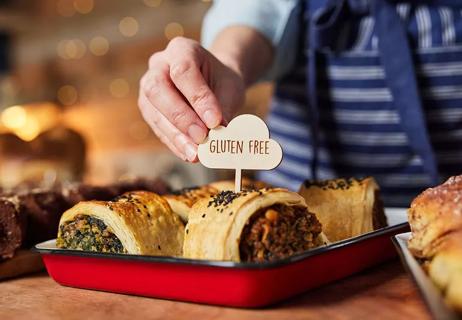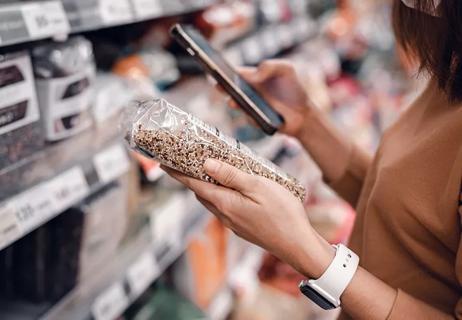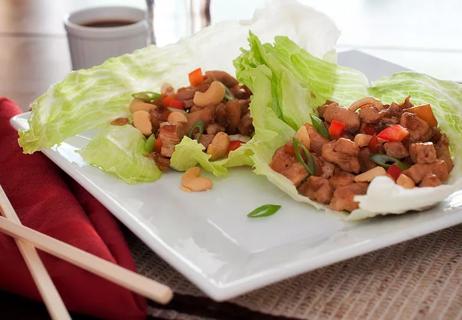The protein lurks in ingredients like oats, chips, beer and processed lunch meat

If you have celiac disease, even traces of gluten (a protein found in wheat, barley, rye and sometimes, oats) can wreak havoc on your intestinal tract.
Advertisement
Cleveland Clinic is a non-profit academic medical center. Advertising on our site helps support our mission. We do not endorse non-Cleveland Clinic products or services. Policy
When pain and distress persist despite remaining on guard against gluten at home and in restaurants, you may be overlooking hidden sources of gluten.
Dietitian Anna Taylor, MS, RDN, LD, CDCES, shares what has gluten in it and how you can avoid those sneaky sources of gluten-containing foods.
It can be challenging, and overwhelming, to follow a gluten-free diet and avoid foods that contain gluten. Just when you think you have it all figured out, there are foods and ingredients that sneakily contain the protein. So, what unexpected foods have gluten? Taylor says to watch out for these foods.
Gluten may be used as a filler or coating in medications and supplements. Always review the ingredients list on any over-the-counter medications or vitamin/mineral supplements.
Any prescribed medications should be reviewed by a pharmacist to be sure they don’t contain gluten — and find gluten-free substitutes if you have celiac disease.
Research also suggests those with celiac disease have a greater need for nutrients like B vitamins, vitamin D and iron. Confer with your healthcare provider to see if your vitamin needs are being met.
Watch for hydrolyzed wheat protein in meat, fish and poultry.
And processed lunch meats and deli meats like cold cuts, hot dogs, salami and sausage may contain gluten. Other foods like self-basting poultry or seasoned turkey breast may contain gluten as well.
Advertisement
Watch for gluten in veggie burgers, sausage, bacon and crumbles, along with imitation seafood and seitan.
“Many of these products use fillers that contain gluten, which can act like a glue to hold ingredients together and provide an elastic texture,” explains Taylor.
Potatoes and corn are naturally gluten-free, but potato chip seasoning may contain malt vinegar and wheat starch.
Also, be aware that tortilla chips and French fries may be fried in the same oil/fryer as foods that contain gluten. This will contaminate the oil and may cause harm to someone with celiac disease.
Look for products that say “gluten-free,” “no gluten,” “free of gluten” or “without gluten,” which are all regulated labeling claims.
Oats are naturally gluten-free whole grains that contain important vitamins, minerals and fiber. But oats are at high risk for cross-contamination. They’re sometimes grown next to wheat or packaged in facilities that have gluten-containing products.
When shopping, beware of bulk bins. Only choose oats that are labeled “certified gluten-free.”
Gluten may be in flavored coffees and teas. But what alcohol has gluten in it? Beer, ale, lager and malt beverages all typically contain gluten. Look for specialty gluten-free beer.
Wine is naturally gluten-free. Distilled alcohol (for example, gin and vodka) is considered safe for people with celiac disease.
You’re ready to tuck into a hearty breakfast, but before you do, you may want to rethink those scrambled eggs.
Eggs and omelets are typically cooked on the same griddles that are also used to make pancakes, causing cross-contamination.
Even though it may claim to be “gluten-free,” think twice before eating gluten-free pizza or even baked goods.
These may be contaminated by other grains because they’re typically cooked in the same oven as regular gluten-containing pizza.
Flavored ice creams (like cookie dough) and gelatos may contain gluten. Look for gluten in candy (especially licorice), energy bars and granola bars, too.
It’s important to read labels every time you purchase an item to verify that all ingredients are gluten-free, as manufacturing practices may change.
Condiments can be a sneaky source of gluten. For example, soy sauce (except for tamari) is made with wheat. Miso, a soup base, may be made with barley.
Whether you’re into ranch or Italian dressing, salad dressings may contain gluten. Beware of salad bars or buffets, as cross-contamination is hard to avoid.
Advertisement
If dining out, be sure to ask your server to avoid putting croutons on your salad.
Sure, Ezekiel bread is full of nutrients, but the popular sprouted bread is made from wheat and barley.
“The act of sprouting doesn’t remove the gluten, so this otherwise healthy bread is a no-go for people with celiac disease,” says Taylor.
Gluten may be used as a thickener, even in bouillon.
Pay attention to the ingredients in soups like chowders and chilis, and even that turkey gravy you love to ladle over mashed potatoes, as flour can be used as a thickening agent.
Taylor suggests the following to avoid hidden sources of gluten:
Advertisement
Being vigilant when it comes to what you eat — making sure you read labels and look out for cross-contamination — can help you stay healthy and avoid pain and discomfort caused by gluten.
“Celiac disease is a lot to manage. Gluten is in a lot of processed foods — and some unprocessed ones as well,” says Taylor.
“Knowing what to look for, reading labels and preventing cross-contamination while following a gluten-free diet is currently the only effective treatment for celiac disease,” she continues. “If you’re struggling, reach out to celiac disease support groups and talk to a dietitian from your healthcare team. You aren’t alone.”
Advertisement
Learn more about our editorial process.
Advertisement

If you have celiac disease, you need to avoid foods that contain gluten

An easy check for all of the items in your shopping cart

Questions and answers about eating a gluten-free diet

Opt for low-FODMAP foods, like grapes, carrots and soy milk, that are easy to digest and help create a balanced gut

The flexible eating plan aims to boost your brain health by focusing on plant-based foods and limiting saturated fat

You can use applesauce, tofu, chia seeds and more in place of eggs

Eat fruits, vegetables, legumes, whole grains, lean proteins and healthy fats to help manage symptoms of this degenerative brain condition

Eat this fatty fish two times a week to support your muscle, brain and heart health

If you’re feeling short of breath, sleep can be tough — propping yourself up or sleeping on your side may help

If you fear the unknown or find yourself needing reassurance often, you may identify with this attachment style

If you’re looking to boost your gut health, it’s better to get fiber from whole foods